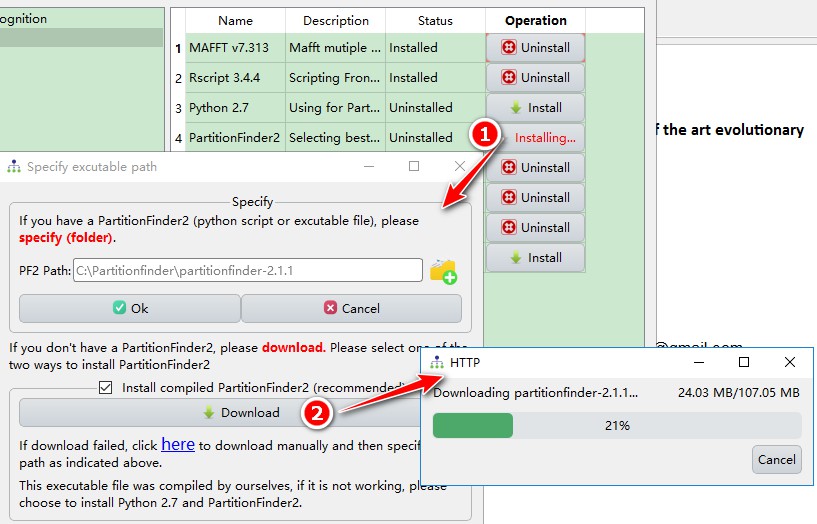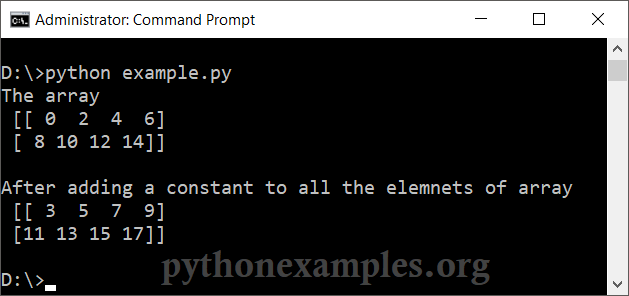

- ADD NUMPY TO ANACONDA MAC HOW TO
- ADD NUMPY TO ANACONDA MAC INSTALL
- ADD NUMPY TO ANACONDA MAC PRO
- ADD NUMPY TO ANACONDA MAC MAC
In my original article, I mentioned something of “a fork of a fork of a fork” and many people asked me “… but, that doesn’t sound like I should do it, does it?” I apologise for making you insecure back then, this was not my intention. That being said, if you figure that at some point I should add an additional paragraph with info for other users if you stumble upon something, please drop me a mail so I can amend this article! Preconsiderations: Pip, Conda, and the Environmental Disaster of Python In general, remember: If some of the commands tell you in a message to do something additional, it is very likely that you should do that. But what I describe here is fairly stable and will work. And no, due to me preparing for my dissertation proposal examination, I don’t have the time deleting everything and setting it up anew.
ADD NUMPY TO ANACONDA MAC INSTALL
Please note that I did not completely test this myself, since Homebrew is a global install and as such I couldn’t just try it out with a new user account.
ADD NUMPY TO ANACONDA MAC HOW TO
on the conda-homepage directly) on how to do that – if you even need specific instructions to begin with. I expect there will little change, and as soon as this article is outdated, there’ll be plenty of “native” documentation (i.e.
ADD NUMPY TO ANACONDA MAC MAC
So, in this blogpost I’ll outline how you can now install PyTorch (and other libraries like SciPy, numpy, pandas, etc.) on your M1 Mac as of mid-2021. In general, I’ve learned a lot over the past 6 months – especially with regard to how you organise your Python environments and all those pesky package dependencies. This doesn’t mean that you can simply run pip install torch on M1 Macs, but almost. But slowly, everything is falling into place. It turns out that actually only few compilers support new platform/architecture combinations easily. Since then, luckily, many things have changed.Īs you can see here and here, we’re slowly getting there. Back then, it involved a little bit of fiddling around and also downloading (or compiling yourself) a version of PyTorch. As I'm getting more and more emails by people asking whether or not my old instructions still hold true, I've decided it's time for an update.Ī few months ago I wrote an article outlining how you could set up a PyTorch data science environment using one of the new MacBooks. However, in the past six months, lots has changed. Back then I told you that installing PyTorch is a pain and back then it was because the ecosystem wasn't fully adapted to the fact that suddenly MacBooks could also have ARM instruction sets. | mysvd | 1.02300 | 4.29386 | 4.13854 | 4.75812 | 12.57879 | / | / | 2.A few months ago I received my first MacBook with an M1 chip – a.k.a.: It uses the ARM-architecture instead of the default Intel-architecture that most modern computers use. | sec | np_veclib | np_default | np_openblas | np_netlib | np_openblas_source | M1 | i9–9880H | i5-6360U |


dario.py: A benchmark script by Dario Radečić at the post above.ģ.It's said that, numpy installed in this way is optimized for Apple M1 and will be faster. Apple-TensorFlow: with python installed by miniforge, I directly install tensorflow, and numpy will also be installed.conda install numpy: numpy from original conda-forge channel, or pre-installed with anaconda.(Check from Activity Monitor, Kind of python process is Intel). Anaconda.: Then python is run via Rosseta.(Check from Activity Monitor, Kind of python process is Apple). Miniforge-arm64, so that python is natively run on M1 Max Chip.On M1 Max, why run in P圜harm IDE is constantly slower ~20% than run from terminal, which doesn't happen on my old Intel Mac.Įvidence supporting my questions is as follows:.On M1 Max and native run, why there isn't significant speed difference between conda installed Numpy and TensorFlow installed Numpy - which is supposed to be faster?.On M1 Max, why there isn't significant speed difference between native run (by miniforge) and run via Rosetta (by anaconda) - which is supposed to be slower ~20%?.
ADD NUMPY TO ANACONDA MAC PRO


 0 kommentar(er)
0 kommentar(er)
